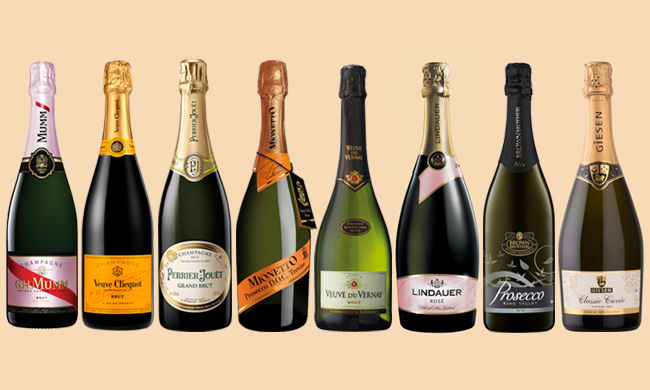Bubbles are one of the most loved options for holiday celebrating. Here’s our guide to the different varieties, how to drink it, what to pair it with, and our top picks for every budget
Main words by Pip Patterson
French or Kiwi?
Champagne, or methode traditionelle (which is what producers call this wine if made outside the Champagne region of France) are essentially made the same way – one without the romantic history, of course.
Champagne costs more for consumers than our humble New Zealand methode traditionelle, but there are sufficient reasons for this. The winemaking process is longer and more arduous in France; they have more “rules” to follow (France has heavily controlled wine making areas); then there is the small fact that champagne must be shipped to the other side of the world for us to enjoy.
Taste the difference
Depending on what you like, champagne generally has more of an earthy or some would say “dusty” taste – due to older vines, more traditional techniques, longer time of the wine on lees (the yeast sediment), and the fact that they are generally aged in the bottle for longer. New Zealand methodes tend to have more of a crisp, fresh character, and give very good bang for your buck – there have been times in international wine competitions when they have performed better than their French counterparts.
Most (not all) bubbles in New Zealand are made with pinot noir and chardonnay grapes specifically grown for use in methode traditionelle. Because the wine needs acidic backbone, the grapes are picked early before the acid converts to too much sugar.
If you’re looking for a dry champagne, go for “brut”, which means unsweetened.
Sparkling and prosecco
Along with champagne and methode traditionelle, there are also “sparkling wines” which are usually at the more economy end of the market, and have simply had CO2 added to a finished wine. The other type of bubbles making an impact in New Zealand is the Italian prosecco. This is made slightly differently again and does not go through a second ferment in the bottle, only in the tank, allowing the price to be more affordable.
Compared to methode traditionelle and champagne, prosecco tends to be slightly sweeter to the palate too. So if you don’t like the crisp dryness of these styles, prosecco could be a
great option.
Top tip: Cool it
In summer, bubbles are a perfect aperitif. The wine will need to be well chilled, (experts recommend 8-10°C), so you may even need to put it in the freezer for 45 minutes before serving to get it right down to the perfect temperature (just don’t forget to take that bottle of bubbles out though, if you want to avoid a messy disaster).
Food match
Cheese platters match well with bubbles – especially creamy brie and camembert, as the wine’s acidity cuts through the fattiness of the cheese. Bubbles are also perfect matched with delicate foods, such as oysters, whitebait and sashimi.
Liquorland Picks

Pictured from left: Mumm Rosé, RRP$69.99, Veuve Clicquot Brut, RRP$79.99, Perrier Jouet Grand Brut, RRP$69.99, Mionetto Prestige Prosecco, RRP$16.99, Veuve du Vernay Brut, RRP$17.99, Lindauer Classic Rosé, RRP$11.99, Brown Brothers Prosecco, RRP$17.99, Giesen Classic Cuveé, RRP$24.99.






